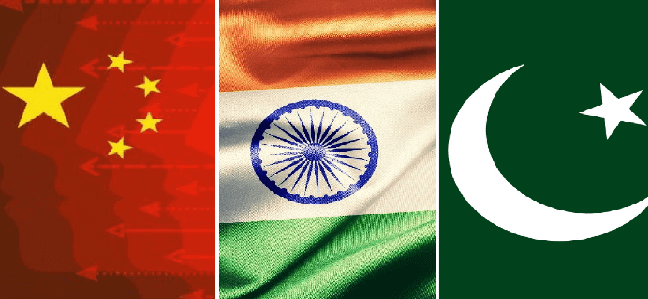From Pakistan to China, India could be entangled in water disputes with both Beijing and Islamabad. India has accused China of rapidly building dams in Tibet while Pakistan has been raising the Indus water dispute for decades now. India for now, seems stuck, from both the sides.
India-China Dam Dispute
China and India share water from the Brahmaputra river along the north-eastern border. China has been rapidly building dams on the river in parts of Tibet and has succeeded in building three dams in the last 10 years.

It plans to construct at least eight more dams in another 10 years. Experts believe that China can use the water supply as a weapon to either block the supply resulting in drying up of the river or it can release water leading to flash floods in low lying regions.
“The ability to control India’s water supply in the hands of the Chinese has always been a legitimate concern. China can use this to cause flash flooding or to divert water that could dry up rivers across India,” wrote Colonel Vinayak Bhat (retired).
With tensions soaring high between India and China after the violent clash in the Galwan valley, such concerns have been heightened. Bhat asserted that according to the satellite images China is not building a large number of dams on the Brahmaputra River for the benefit of the people of Tibet as the area is scantly populated and one dam would be enough to meet the needs of the inhabitants.
“One reason could be to use these dam reservoirs such as the Dagu dam to divert Brahmaputra’s water to dry areas in Xinjiang or Central China. However, there is no evidence to prove this,” he said.
India and China have signed bilateral treaties that require China to share data with India during the monsoon to keep track of water levels and prepare for floods in the northeastern region of India.
“Although New Delhi is paying a hefty sum of Rs 80 lakhs to Beijing for this data each year, the response India gets from the Chinese every time is the same- water in the Brahmaputra river washed the measuring instruments away,” said Bhat.
International obligations also require China to seek permission from downstream countries before constructing any dam upstream on the Brahmaputra river but it has always failed to carry out such obligations and hasn’t shared data with India.
India-Pakistan Indus Water dispute
While China poses a threat for India, Pakistan is intimidated by India’s move to weaponise water on the Indo-Pak border. Even though the Indus water treaty is seen as one of the most successful cases of conflict resolution.
The treaty was signed in 1960 that marked out control over six rivers flowing through the Indus basin. However, every now and then the issue comes up when India and Pakistan are engaged in disputes. The issue is further aggravated since three out of the six rivers lie in the disputed region of Jammu and Kashmir that both the countries claim to be a part of their territory.
After the Uri Attack in 2016, Prime Minister Narendra Modi said ‘blood & water can’t flow together at the same time’ in meeting with Water ministry officials on Indus Waters treaty. It was decided in the meeting to “exploit to the maximum” the water of Pakistan-controlled rivers as per the water-sharing pact. It was decided that to stop the flow of these waters and divert them for use in Jammu & Kashmir and Punjab through three projects:
The Shahpur Kandi dam project, the UJH dam project in Jammu & Kashmir, and a second Sutlej-Beas link in Punjab. “Construction of one of the projects that seek to divert the waters is underway and can be observed through satellite images,” wrote Bhat.
The issue was again raised after the Pulwama attack last year when India’s transport minister, Nitin Gadkar echoed a similar sentiment and tweeted that “our Govt. has decided to stop our share of water which used to flow to Pakistan. We will divert water from Eastern rivers and supply it to our people in Jammu and Kashmir and Punjab.”
However, it is important to note that under the provisions of the treaty, India cannot cut off the water supply entirely. It can reduce the water flow to Pakistan by utilizing the provisions of the treaty.